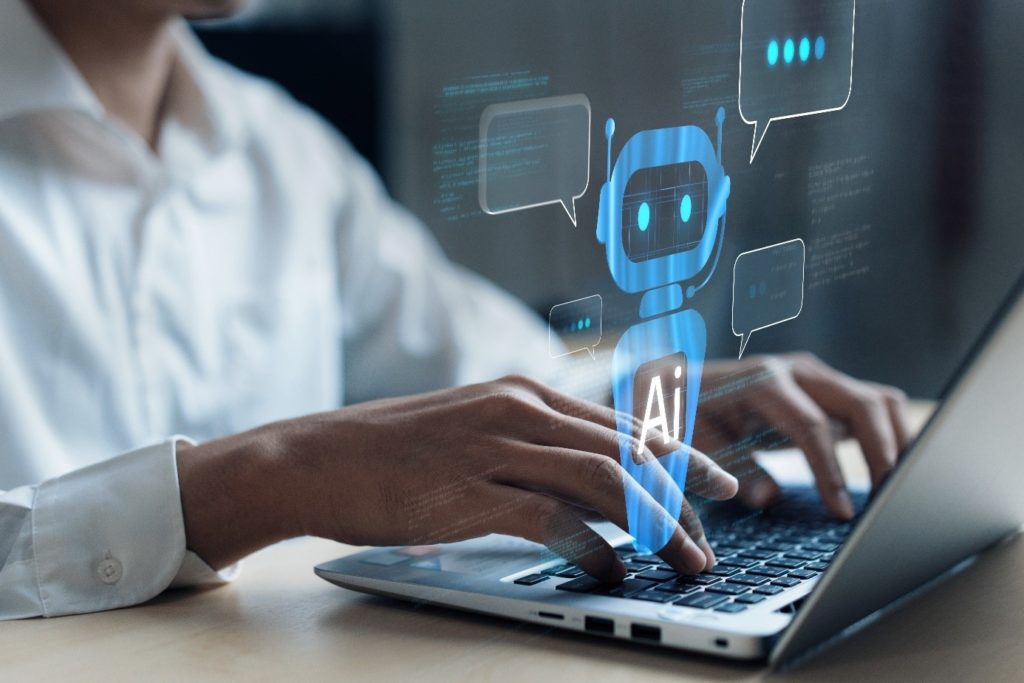The Use of AI in Marketing: Opportunities, Challenges, and Best Practices
In recent years, the integration of Artificial Intelligence (AI) in marketing has revolutionized the way companies interact with customers and optimize their strategies. AI’s ability to process large datasets, predict consumer behavior, and automate repetitive tasks has made it an indispensable tool for businesses aiming to stay competitive in an increasingly digital world. However, while AI holds immense potential, it is not an universal solution. In some areas, AI excels and drives innovation, but in others human intuition and creativity remain crucial. In this article, we will explore where AI excels in marketing and where it falls short compared to human capabilities. We will also provide practical guidelines for integrating AI into marketing strategies.
The Strengths of AI in Marketing
AI’s most significant advantage in marketing is its ability to analyze vast amounts of data quickly and accurately. In the world of digital marketing, data is the lifeblood of decision-making. AI can process consumer data at an unparalleled speed, identifying patterns and trends. Machine learning algorithms can segment customers based on various behavioral factors, such as browsing habits, purchase history, and social media interactions, allowing companies to create highly personalized campaigns. For instance, Netflix uses AI to analyze user preferences and recommend personalized content, significantly improving user experience and engagement (Hennig-Thurau et al., 2020).
Another area where AI excels is automating routine tasks. Chatbots, powered by natural language processing (NLP) algorithms, are being used to interact with customers in real-time, answering queries, assisting with purchases, and even solving issues without the need for human intervention. This not only enhances customer satisfaction but also reduces operational costs for businesses. Companies like Sephora and H&M have successfully implemented AI chatbots to improve customer service and provide instant support, leading to higher customer retention rates and improved brand loyalty (Chaffey, 2020).
AI is also instrumental in optimizing marketing campaigns. Tools powered by AI can predict the best times to send emails, determine which products are likely to sell the most, and suggest the most effective advertising channels. Platforms such as Google Ads and Facebook use AI to deliver targeted ads to the right audience, maximizing return on investment (ROI) for advertisers. By analyzing consumer data and past behaviors, these platforms can predict what products or services are likely to catch user interest, enhancing ad relevance and increasing the likelihood of conversion.

The Limitations of AI: Where Humans Still Have the Edge
Despite its impressive capabilities, AI has certain limitations that prevent it from completely replacing human involvement in marketing. One area where AI falls short is in emotional intelligence and creativity. While AI can analyze data and predict consumer behavior with high accuracy, it lacks the ability to understand human emotions and their nuances. For example, AI might struggle to capture the emotional impact of a brand’s messaging or recognize the subtle tone shifts in customer interactions, which are crucial in crafting compelling marketing content.
Furthermore, AI-driven content generation has limitations when it comes to creativity and originality. Tools like GPT-3 can generate text, but the content often lacks the deeper emotional resonance and storytelling ability that human writers bring to the table. While AI can be an excellent tool for writing basic product descriptions or generating social media posts, it often falls short when tasked with creating highly engaging, thought-provoking narratives that require human intuition and cultural awareness. In marketing, storytelling is a powerful tool for connecting with audiences on an emotional level, and this is something that AI still cannot replicate fully.
Another limitation of AI is its reliance on historical data. AI models work by analyzing past data to predict future trends, which means they are inherently reactive rather than proactive. This can be problematic in rapidly changing markets where consumer preferences shift quickly, and historical data may no longer be a reliable predictor. In such cases, human marketers can take a more adaptive approach, using intuition and experience to anticipate shifts in consumer behavior before they become apparent in the data. This is particularly true in creative fields such as branding and product development, where human insights are often needed to drive innovation.

Best Practices for Using AI in Marketing
To maximize the benefits of AI in marketing, businesses should follow key best practices. First, AI should be seen as a complement to human creativity, not a replacement. AI can automate tasks, analyze data, and make predictions, but human marketers are essential for injecting creativity, intuition, and empathy into marketing campaigns. AI should be used to handle repetitive tasks and data analysis, freeing up human marketers to focus on more strategic and creative aspects of their work.
Second, businesses should ensure they are using high-quality, relevant data when implementing AI tools. AI’s effectiveness relies heavily on the quality of the data it is trained on. Using inaccurate or incomplete data can lead to flawed insights and poor decision-making. Companies should invest in robust data collection and management systems to ensure that the AI tools they use are working with the best possible data. For example, e-commerce giants like Amazon and Alibaba have developed sophisticated systems to collect and analyze customer data, which allow them to deliver highly personalized shopping experiences (Brynjolfsson & McAfee, 2014).
Additionally, transparency is critical when using AI in marketing. Consumers are increasingly aware of how their data is being used, and a lack of transparency can lead to mistrust and backlash. Marketers should be transparent about how they are using AI, particularly in areas like data collection, personalization, and automated customer interactions. Clear communication and consent practices will help build trust and improve the overall customer experience.
Conclusion
AI offers immense potential for transforming marketing by enabling personalized experiences, automating tasks, and optimizing campaigns. However, it is important to recognize that AI is not a replacement for human involvement. While AI excels in data analysis, automation, and campaign optimization, human creativity, intuition, and emotional intelligence are still indispensable in areas like content creation, brand storytelling, and adapting to rapidly changing market conditions. By following best practices and leveraging AI as a tool to complement human efforts, businesses can unlock the full potential of this technology while maintaining the authenticity and emotional connection that are vital for successful marketing strategies.

Real Life – how we do it
At Next Level Agency, we incorporate AI into our processes only with the client’s consent, and always within controlled parameters—limiting its scale, trust level, and overall influence.
Below you will find two examples of how we utilize AI to enhance our output.
In cases where time constraints prevent the creation of fully hand-drawn elements, we selectively integrate AI-generated components—such as background details or secondary characters—to meet client requirements efficiently. This approach ensures high-quality results without the need for significantly larger design teams and extended production timelines.
For last-minute projects, we utilize AI to enhance or organize certain text elements, streamlining the process while maintaining our creative vision. However, every piece of content undergoes thorough human refinement to meet our quality standards.
Additionally, we use AI as a supplementary tool for data analysis, cross-checking our manual research to ensure no critical sources are overlooked. However, we remain cautious, recognizing that AI-generated insights are based on past data and publicly available information, which may be influenced by biases, emotions, or speculative interpretations.
Despite AI’s advantages, we firmly believe that human creativity, emotional intelligence, and real-world experience remain irreplaceable. Therefore, while AI serves as a valuable assistant, it never replaces our expertise, judgment, and artistic integrity.
References:
- Chaffey, D. (2020). Digital Marketing: Strategy, Implementation, and Practice. Pearson Education.
- Brynjolfsson, E., & McAfee, A. (2014). The Second Machine Age: Work, Progress, and Prosperity in a Time of Brilliant Technologies. W. W. Norton & Company.
- Hennig-Thurau, T., Wiertz, C., & Feldhaus, D. (2020). “AI in Marketing: Advancements and Challenges.” Journal of Marketing, 84(4), 1-13.
